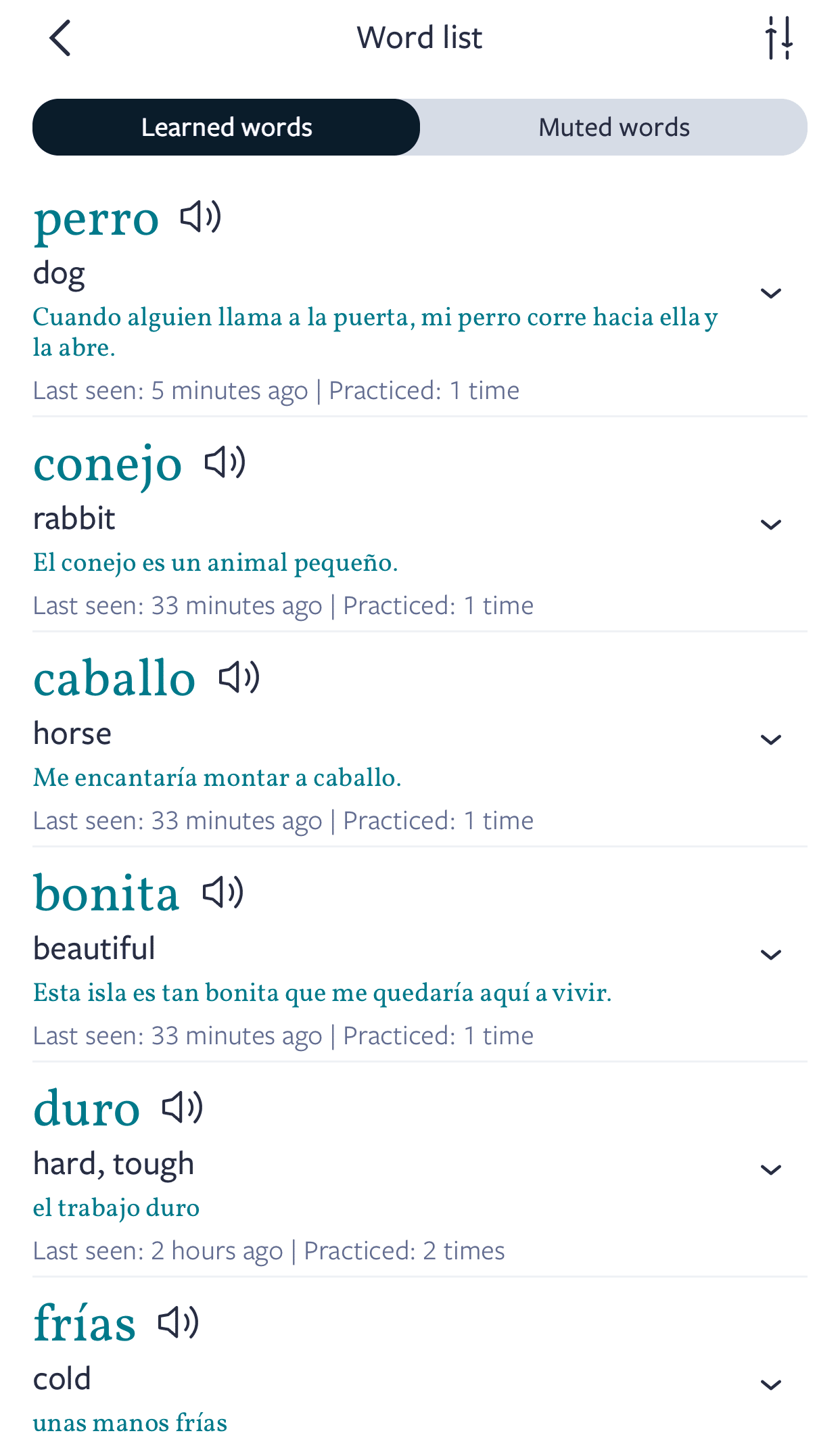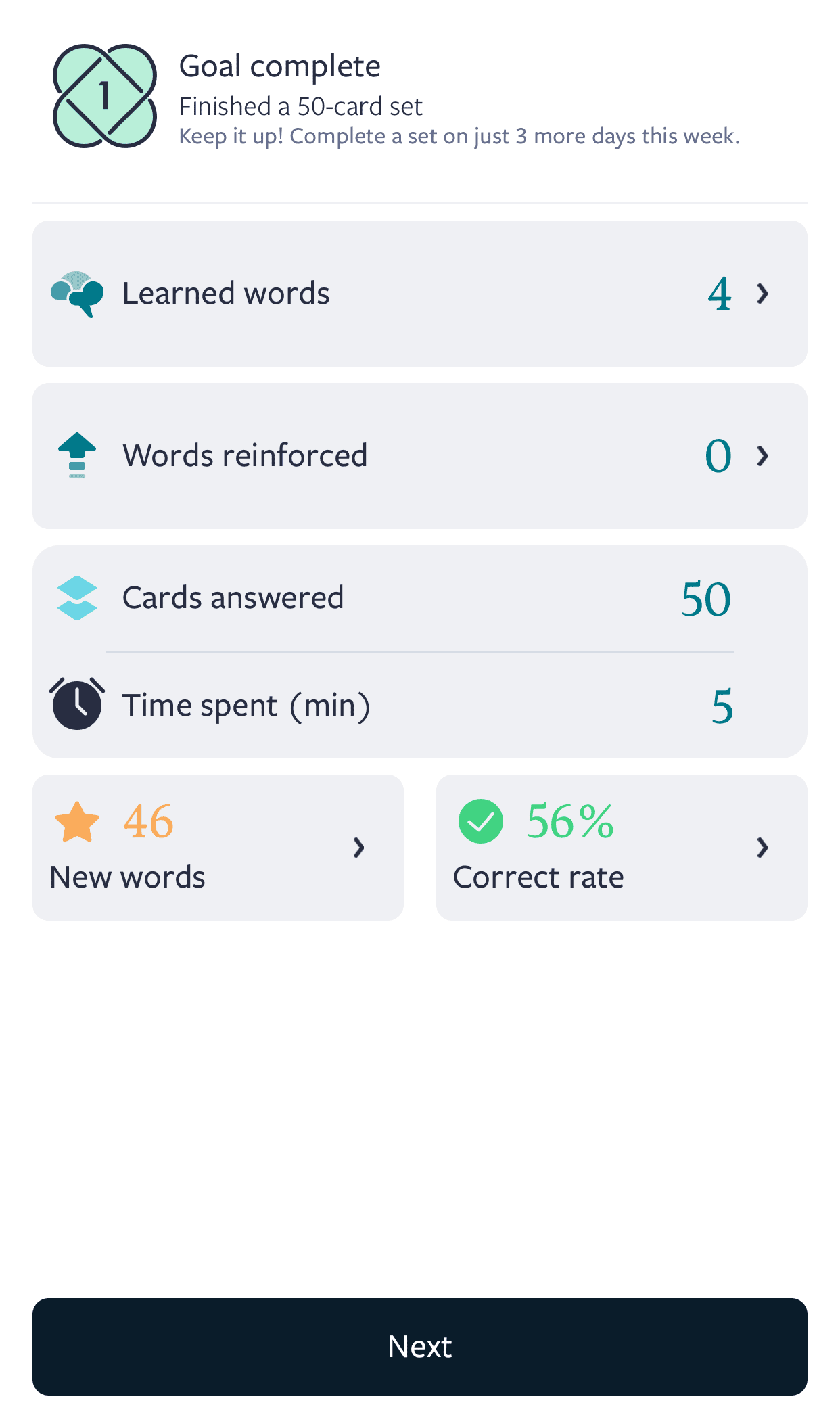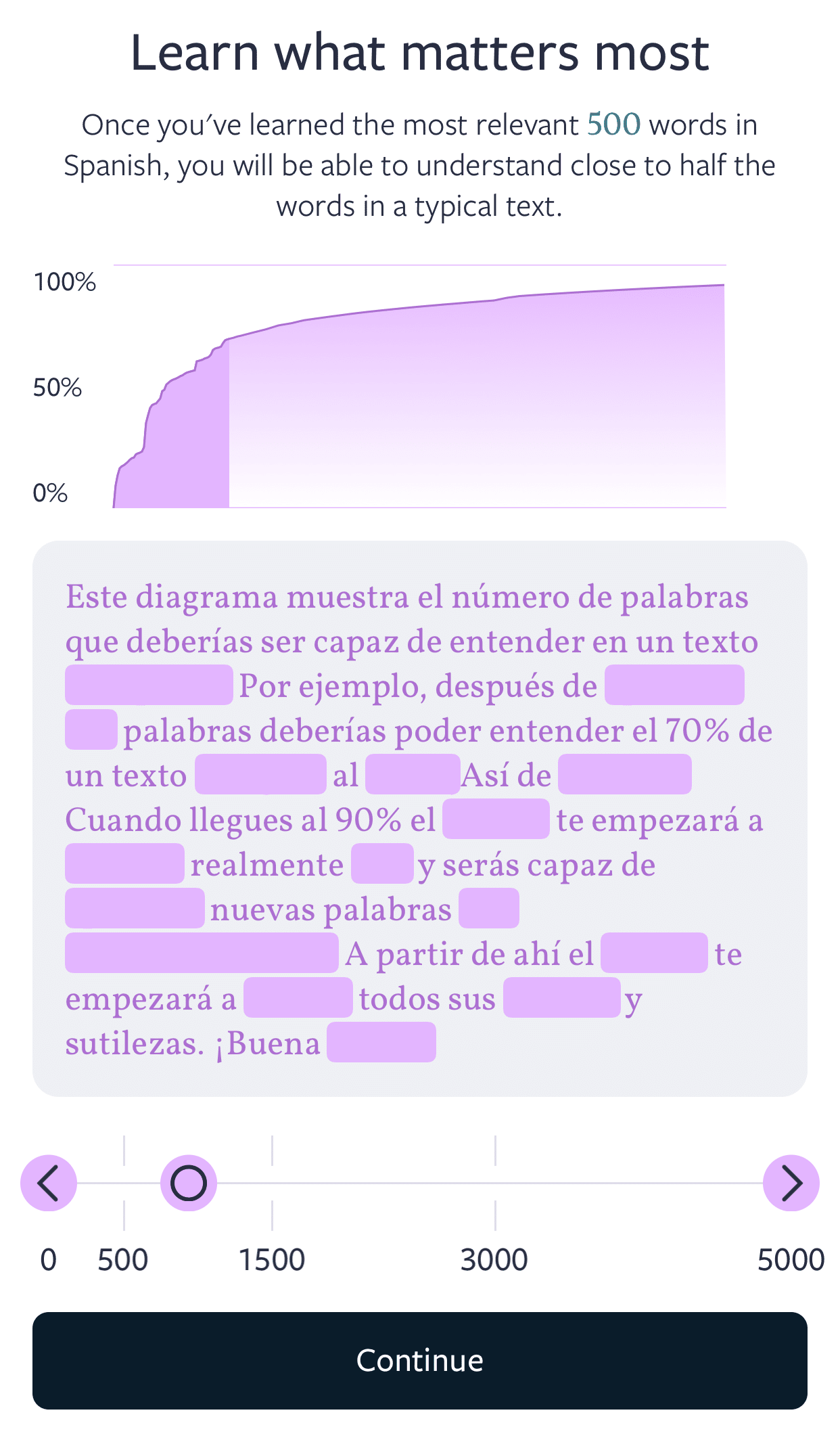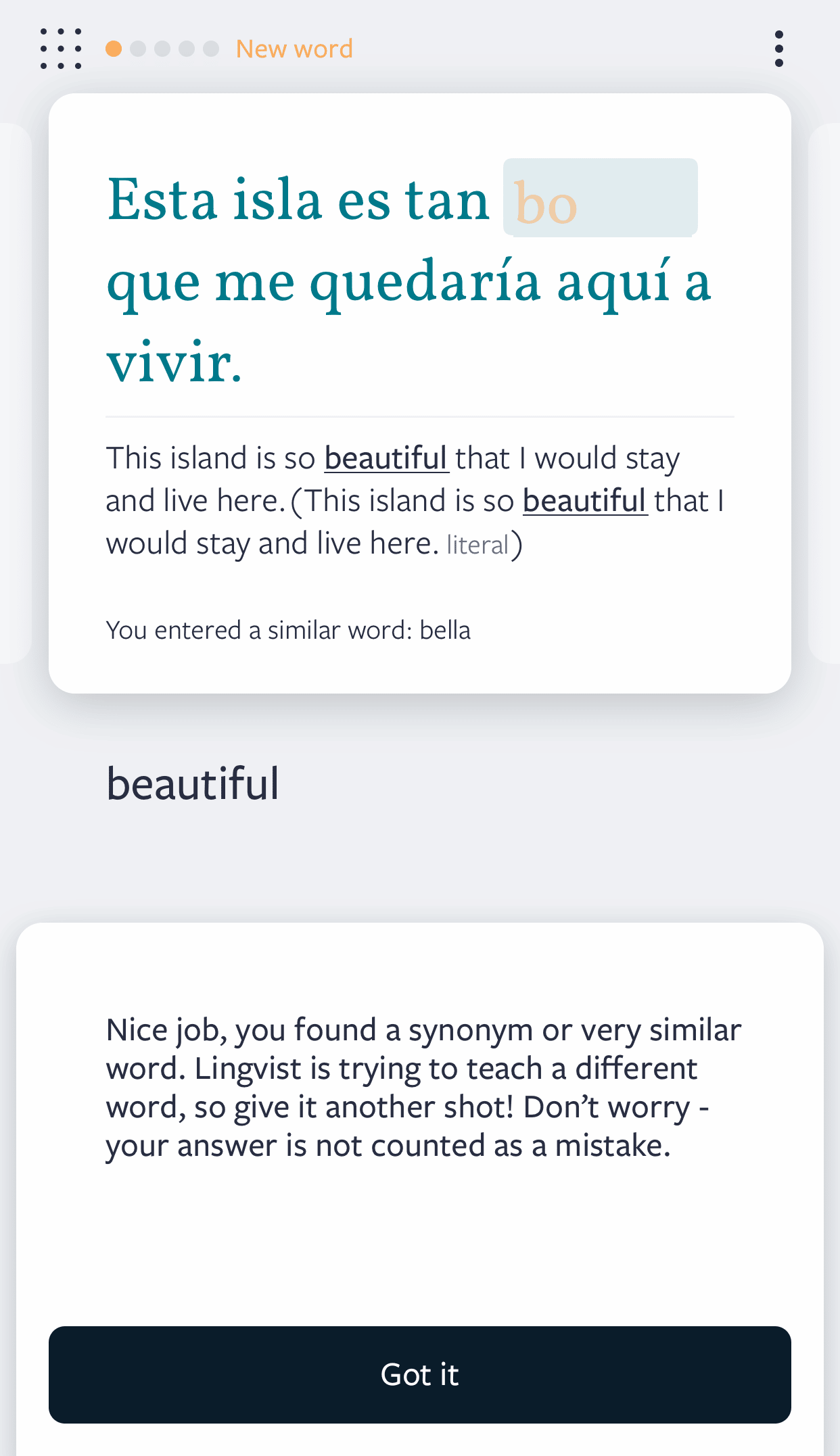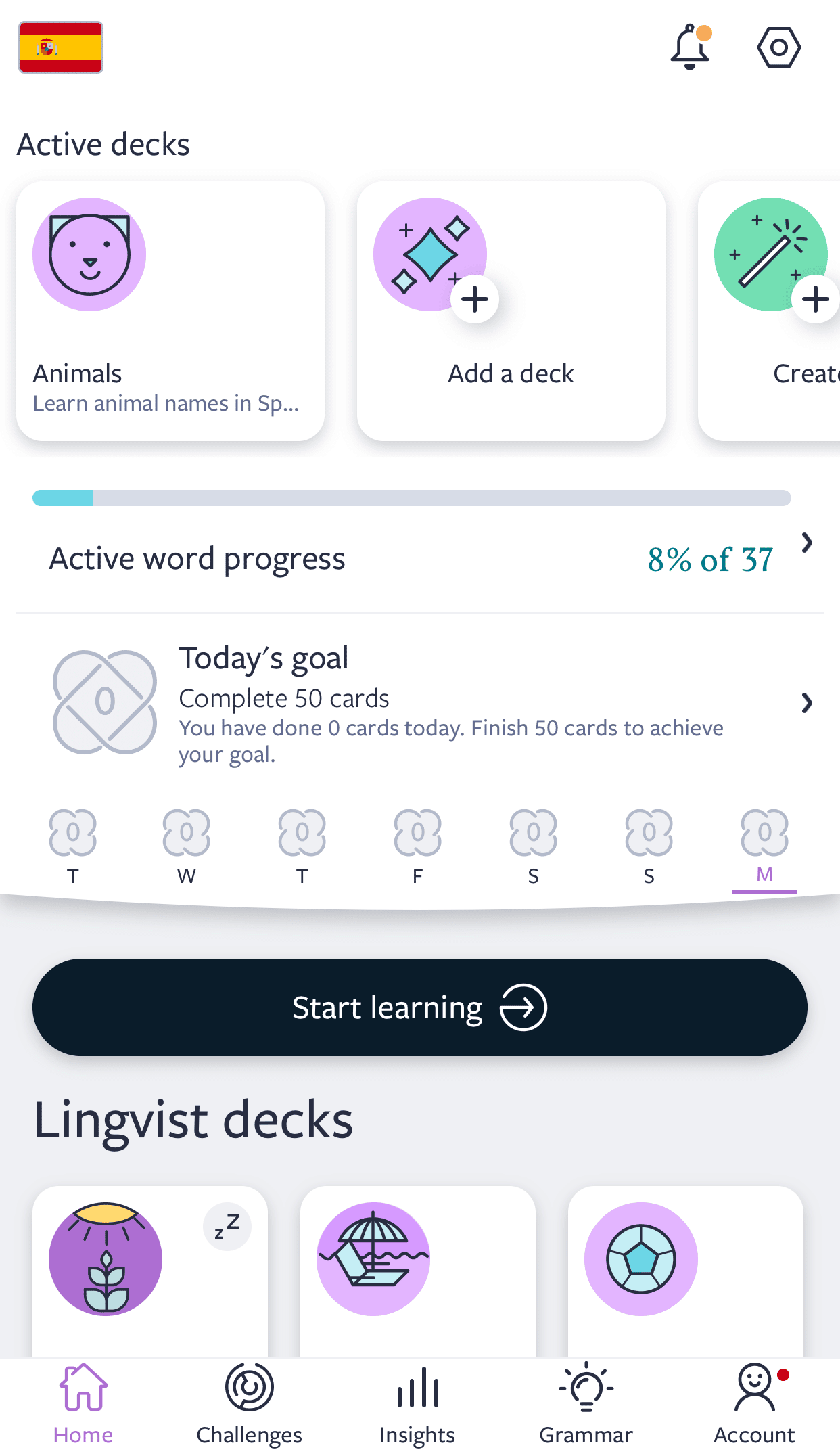
Lingvist Review: Valuable Vocabulary Trainer, But Teaches in a Vacuum
Lingvist is proof that flashcards are a timeless and convenient tool. It’s a neat little app that strives to teach you a language almost entirely with flashcards, with a few modern upgrades to make your learning convenient and quick.
While studying Spanish, I found Lingvist to be a nifty vocabulary trainer with a system that’s friendly to any learner of any level, but it could do with a little more interactivity and variety in its format.
Overview

Name: Lingvist
Description: A flashcard-based vocabulary learning program.
Languages offered: French, European and Latin American Spanish, German, Italian, Dutch, Russian and Portuguese.
Offer price: Monthly subscription at $9.99/month or $79.99/year; free trial is available
Summary
Lingvist is a neat little language learning app that strives to teach you a language almost entirely with flashcards. In a nutshell, It’s a solid vocabulary trainer with a system that’s friendly to any learner of any level, but it could do with a little more interactivity and variety in its format.
- User friendliness - 9/109/10
- Delivers on promises - 9/109/10
- Authenticity - 6/106/10
- Value for price - 7/107/10
Pros
- Lets you learn through SRS with both pre-made and custom flashcard decks
- Comprehensive word lists for easy viewing
- Detailed progress tracker to measure your advancement
- Extra grammar and quiz sections
- Simple and neat interface
Cons
- Exercises can get monotonous
- Not many language choices
- Does not provide much context for learned vocabulary
Contents
- The Features: What Lingvist Offers
- The Process: How Learning Works in Lingvist
- The Pricing: How Much Does Lingvist Cost
- What I Like About Lingvist
- What I Don’t Like About Lingvist
- Comparing Lingvist to Other Language Learning Apps
- Final Thoughts: Should You Get Lingvist?
Download: This blog post is available as a convenient and portable PDF that you can take anywhere. Click here to get a copy. (Download)
The Features: What Lingvist Offers
Lingvist is an adaptive language learning app available for both iOS and Android. It was first made internationally available in 2014.
The app’s ultimate goal is to teach the words “that you really need” to understand from a language.
Lessons for seven languages
Lingvist currently offers seven languages: English, French, Russian, German, Spanish, Portuguese and Estonian.
For Spanish, you can choose to learn either European or Latin American Spanish.
Learning with both pre-made and custom flashcard decks
With its scientific, AI-based approach, Lingvist primarily utilizes a flashcard-based system for quick and easy learning. You get access to a series of topic-based decks that contain essential vocabulary. You also have the choice to create custom decks.
If at any point you’d like to skip a word (which may be the case if you know it by heart), you can choose to “mute” vocabulary by tapping on a flag icon when you reach its flashcard.
Comprehensive word lists for easy viewing
For a more direct overview of the words you’ve learned, you can also view word lists. These will also include audio pronunciations, example sentences from encountered flashcards and the amount of time that’s passed since you last practiced the word in question.
Detailed progress tracker to measure your advancement
You can keep track of your successes with the built-in progress tracking system, whether you want to see how much of a certain deck you’ve completed or check how much work you’ve done over a week.
The app will assess your goals so you get a clear picture of how you’re doing. It lets you know what words you’ve mastered, “at-risk” words that you should practice further and words that you’re currently working on learning.
Extra grammar and quiz sections
Lingvist’s “Grammar” and “Challenges” sections are supplemental resources meant to deepen your understanding of a language.
The “Grammar” feature offers brief tips and explanations for critical grammatical concepts, while the “Challenges” section provides quizzing opportunities to work on your speaking, grammar, reading and writing.
The Process: How Learning Works in Lingvist
As soon as you choose a language and indicate your reasons for learning, Lingvist presents a neat graph and an example text that demonstrate the level of progression you should expect.
The app claims that learning the 500 most highly used and relevant words in a language will allow you to understand almost 50% of standard text.
Learning with Lingvist is very simple. You’re given a set of flashcards covering a bunch of words related to a certain topic or theme. For each flashcard, you manually input the requested word (provided with its translation) and move on to the next. That’s it!
Sometimes, you’re tested on vocabulary used in context within full sentences. This is great for getting more general practice with the language.
Lingvist even notes when you’ve inputted a word that, while not incorrect in meaning, isn’t the answer they’re looking for. This can make them seem a bit nit-picky, but it does help push you to practice the words the app wants you to learn.
The decks are meant to be completed quickly. Lingvist goes out of its way to make the exercises fast so that you can blast through a whole set without much struggle.
The company estimates that with just 20 minutes of daily practice, users can learn up to 30 words a day.
The Pricing: How Much Does Lingvist Cost
Lingvist currently offers a free seven or 14-day trial. If you wish to continue using the app after that, you’ll need to sign up for a paid subscription plan.
At this time, the monthly plan is $9.99 per month, while the annual plan is $79.99 per year. These numbers might sound a bit hefty, but Lingvist does occasionally offer discounts, so you can jump on those whenever they’re available.
What I Like About Lingvist
I played with Lingvist for about a week, and during that time I found a lot to like. Here are some of the stand-out strengths that I believe demonstrate the app-eal of the app!
Simple and neat interface
I’m a sucker for clean visual interfaces. Cluttered screens are the bane of my digital-based enjoyment (especially when I use an app frequently) and they can be a big detriment to the learning experience as well.
Thankfully, Lingvist’s visuals are very polished and simple, but not to the point of being boring. The blocks of text and icons are positioned in a way that makes sure your eyes don’t wander about.
The app is incredibly easy to navigate and I didn’t experience any technical hang-ups or glitches.
Everything on the interface is clear-cut and the screen primarily shows only what you need to pay attention to, which is quite critical in helping learners who are easily distracted to stay focused.
UI and UX design matter greatly for mobile apps, and it’s not just about avoiding eyesore-inducing visuals. The tactile and visual experience of using Lingvist is, in my opinion, a big contributor to its overall appeal.
Effective spaced repetition system
Spaced repetition system (also known as SRS) is a powerful method of learning based on timed intervals. Essentially, it makes you encounter material at certain moments in your practice sessions when your chances of memorization are high. SRS can be a highly effective educational tool for language learning.
Lingvist utilizes SRS in a pretty sophisticated manner. Upon your initial use of the app, you take a placement exam in which Lingvist evaluates your skill level in the language.
Based on how you do with a select number of words, the app will focus on words that you probably need to study more, while paying less attention to words that you seem to already know.
When going through the decks, all your answers are inputs that teach the Lingvist repetition algorithm what you’re good at and what you need to practice. In particular, the words you continually make mistakes on will be logged and set to be repeated at varying intervals.
From my own experience, the app definitely does have a knack for knowing which words I should practice. Over time, I found that I was making fewer mistakes and improving my memory of initially troublesome vocabulary.
Of course, I’m not entirely conscious of how much time there is between each repetition of a word. But consistently doing the exercises as designed has been effective at lowering my chances of forgetting material.
Even after not using Lingvist for a while and hopping back in, I didn’t fumble nearly as much as I had in my first few runs.
Bonus instruction and review
Lingvist’s “Grammar” and “Challenges” sections are, in my opinion, much-needed and appreciated features.
While not very extensive or overly comprehensive, they’re still fantastic ways to add more “oomph” to your language studies.
The primary vocabulary-training exercises are a great workout, but reading up on basic grammar rules and going the extra mile with supplemental quizzes can make for more fruitful learning sessions.
I frequented these sections often because of how helpful they were to my studies. I found it best to peek at them before a learning session, as they aided my ability to parse the flashcards that contain sentences.
Helpful statistics and tracking system
Learning with apps tends to be speedy and convenient, but keeping track of your progress can end up falling to the wayside.
Luckily, Lingvist makes it very easy to see how you’re doing. If you’re the type of person who sets weekly goals, you can get a graph to see if you’ve met your goals.
If you’re more interested in how much vocabulary you’ve learned, you can see how many words you’ve covered and whether you need further review in any of them.
Lingvist provides just enough detail to give you a good representation of where you currently are and how you can move forward.
The statistics aren’t overwhelming to the point of being cumbersome. They can serve as a great motivational tool, particularly for learners who are conscious about meeting specific proficiency standards or study deadlines.
What I Don’t Like About Lingvist
No app is without its flaws, and Lingvist does have a few weak points that are worth noting.
Exercises can get monotonous
Flashcards are great learning tools for how accessible and simple they are. However, if that’s all you’re using, your studies can quickly become rote and dry.
I did appreciate the instances when I had flashcards containing full sentences because they got my brain working much harder than my encounters with isolated vocabulary.
However, after going through a few decks, I admittedly became a little bored of the same-y exercises.
There are a few ways that digital flashcard programs like Lingvist could provide slightly more interactive or varied learning. The inclusion of visuals, like images or even short video clips, can be fantastic additions that can make a huge difference in successful vocabulary memorization.
Few language choices
As of now, Lingvist only offers seven languages. This could cut into the app’s potential pool of users, especially those who are interested in learning non-European languages.
Lingvist has been in the market for seven years and is quite popular, so it’s likely that more languages will be added to its roster in order to expand its user reach. However, this may take a while, since the decks for each language are rather comprehensive.
Does not provide much context
Lingvist is great at letting you learn and review vocabulary. Yet, most of the words are taught in relative isolation.
It’s how flashcards tend to work, after all. By just using Lingvist alone, language learners can garner a kind of “phrasebook” of singular words or short phrases. But there isn’t much explanation or “backdrop” provided for them.
In other words, you aren’t given much context or cultural cues about what you learn, even though these can probably be squeezed into the flashcards in some way.
Comparing Lingvist to Other Language Learning Apps
There’s no question that the app market is stuffed to the brim with language learning apps. With all its pros and cons, how does Lingvist stand against two of its more formidable competitors?
Lingvist vs. Duolingo

Lingvist primarily focuses on the essential words of a language, while Duolingo seems to try and bombard you with all kinds of terms. Lingvist’s context-providing sentences are also more articulate and realistic than Duolingo’s—indeed, Duolingo’s wacky and sometimes nonsensical sentences have been a common point of amusement for users.
But in terms of pricing and longevity, Duolingo may just have Lingvist beat. Duolingo’s extensive lessons are available to you at no cost at all. I’m sure many potential users (particularly the ultra-casual learners) will find that to be a major selling point.
For a more extensive review of Duolingo, check out our review.
Lingvist vs. Memrise

Memrise and Lingvist both do well in providing straightforward vocabulary training. The listening components primarily just help you with pronunciation.
Video content is something Lingvist doesn’t currently offer, but Memrise’s courses sometimes include video clips that further aid you in absorbing the material.
Memrise’s pricing is also quite reasonable. Most of its features are available with a free account, although you can get access to a few more features with a membership. As of August 2022, the price for a premium plan starts at $8.49 per month, making Memrise a less costly option than Lingvist.
Overall, Memrise is reasonably balanced with Lingvist in terms of content format and usefulness. A learner who craves a more linear, course-like format may find Memrise to be a better fit. Lingvist can be a bit more “jumpy” in terms of material difficulty, although this might be appealing to learners who like the challenge.
For a more extensive look into Memrise, you can check out our review.
Lingvist vs FluentU
Many language learning apps on the market such as Lingvist teach vocabulary without emphasizing the significance of context and culture. Both greatly affect how and when you can actually utilize the words you learn.That’s where an app like FluentU can come in handy. If you decide to get Lingvist, you can pair it with FluentU to get a more comprehensive education that can prepare you for real-life conversation and cultural immersion.
With FluentU, you hear languages in real-world contexts—the way that native speakers actually use them. Just a quick look will give you an idea of the variety of FluentU videos on offer:

FluentU really takes the grunt work out of learning languages, leaving you with nothing but engaging, effective and efficient learning. It’s already hand-picked the best videos for you and organized them by level and topic. All you have to do is choose any video that strikes your fancy to get started!
Each word in the interactive captions comes with a definition, audio, image, example sentences and more.
Access a complete interactive transcript of every video under the Dialogue tab, and easily review words and phrases from the video under Vocab.
You can use FluentU’s unique adaptive quizzes to learn the vocabulary and phrases from the video through fun questions and exercises. Just swipe left or right to see more examples of the word you're studying.

The program even keeps track of what you’re learning and tells you exactly when it’s time for review, giving you a 100% personalized experience.
Start using the FluentU website on your computer or tablet or, better yet, download the FluentU app from the iTunes or Google Play store. Click here to take advantage of our current sale! (Expires at the end of this month.)
Final Thoughts: Should You Get Lingvist?
Overall, Lingvist is a great resource to help train you in the common and essential vocabulary of the languages offered. Because it’s so straightforward in its format, any learner can pick it up and start using it with no trouble at all.
Learning is fast, pain-free and very casual, making the app particularly nifty for learners who aren’t seeking significant fluency in a new language but are still keen to get a good taste of it.
Lingvist’s monthly price of $9.99, while not overly expensive, may still be a bit discouraging for casual learners who wouldn’t frequent the app on a day-to-day basis (especially if they need to pay for other programs to get a more complete learning experience).
That said, if you really want to focus strongly on vocabulary lessons for a while, it might be worth paying for this app for a few months (at least until you’ve studied all the flashcard decks that interest you).
At the moment, Lingvist works best as a companion resource to more comprehensive and intensive learning tools. Alternatively, it can also work very well for review purposes should you ever need to revisit the basics of a language’s lexicon.
Hopefully, with future improvements, Lingvist can further enhance its educational potential and work to provide more intensive language training for learners seeking a challenge. Ideally, it can do so without sacrificing its simplistic and polished interface.
